Unveiling the Intricacies of the Horus Heresy Legions: Origins, Traits, and Significance
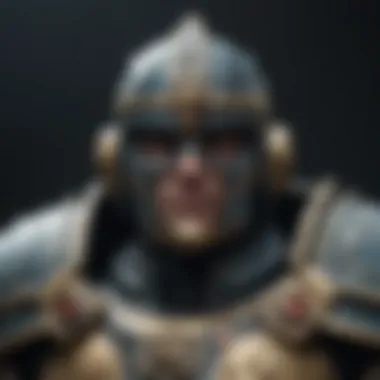
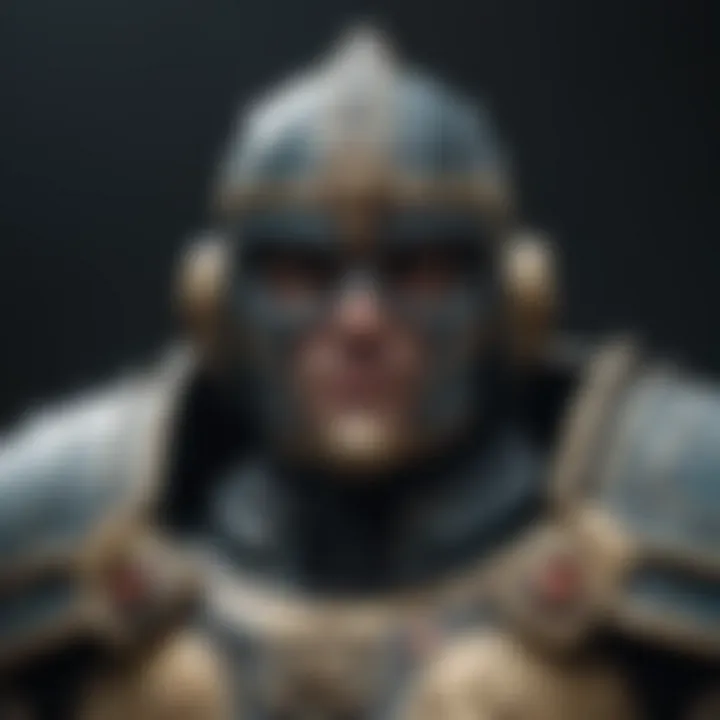
Introduction
In this detailed exploration of the Horus Heresy Legions within the vast Warhammer 40,000 universe, we unravel the intricate origins, characteristics, and significance of each legion. From the catalysts that ignited the civil war to the diverse traits and worldviews that shaped the legions, this article offers a profound insight into this crucial chapter of cosmic conflict.
The Horus Heresy Legions: Seminal Moments and Tragic Events
The Horus Heresy marked a turning point in the Warhammer 40,000 lore, with each legion playing a distinct role in the tragic events leading to the galaxy-shaking civil war. Understanding the pivotal moments that defined the legions sets the stage for comprehending their beliefs, values, and loyalties.
The Ideologies That Divide: Exploring Philosophies and Dogmas
Dive into the diverse ideologies and dogmas that distinguish each legion from one another. From the honor-bound ways of the Space Wolves to the insidious plots of the Alpha Legion, each legion's beliefs color their actions and set them on distinct paths of glory or damnation.
Unveiling Unique Traits: Specializations and Abilities
Delve deep into the unique traits and specializations of the Horus Heresy Legions. From the World Eaters' savage combat prowess to the Ultramarines' strategic brilliance, each legion brings its own strengths and weaknesses to the battlefield, shaping the course of the conflict.
The Legacy of the Heresy: Impact on the Warhammer , Universe
Examine the lasting legacy of the Horus Heresy on the Warhammer 40,000 universe. Explore how the events of the heresy continue to reverberate across space and time, influencing factions, characters, and conflicts in the grim darkness of the far future.
Introduction to the Horus Heresy Legions
In this article, the spotlight is directed towards the pivotal topic of the Horus Heresy Legions within the vast Warhammer 40,000 universe. This section serves as the foundational piece, laying the groundwork for a profound exploration of the origins, characteristics, and impacts of each legion. By delving into the tumultuous events that sparked the civil war and unraveling the intricate ideologies that define these factions, readers are primed to embark on a detailed journey through one of the most crucial chapters in the cosmic conflict.
Origin of the Horus Heresy
The Emperor's Dream
The Emperor's Dream stands as a critical cornerstone in the narrative of the Horus Heresy, symbolizing the grand vision that ultimately fractured into dissent and treachery. This aspect encapsulates the lofty aspirations of unity and order pursued by the Emperor, only to be marred by betrayal and chaos. The significance of The Emperor's Dream lies in its portrayal of ambition overshadowed by hubris, serving as a cautionary tale of unchecked power and ambition within the grim darkness of the far future depicted in Warhammer 40,000. Its unique feature lies in the juxtaposition of noble intentions with disastrous consequences, offering a compelling exploration of the complexities inherent in leadership and destiny.
The Corruption of Horus
Conversely, The Corruption of Horus embodies the pivotal moment when honor gave way to malevolence, leading one of the Emperor's greatest champions down a path of damnation. This aspect highlights the seductive nature of chaos and the insidious ripple effects that engulfed an empire in turmoil. Its key characteristic lies in showcasing the vulnerability of even the mightiest heroes to corruption and temptation, adding layers of tragedy and intrigue to the overarching narrative. The unique feature of The Corruption of Horus is its ability to humanize legendary figures while exploring the shades of moral ambiguity that permeate the Warhammer 40,000 mythos.
Key Players in the Heresy
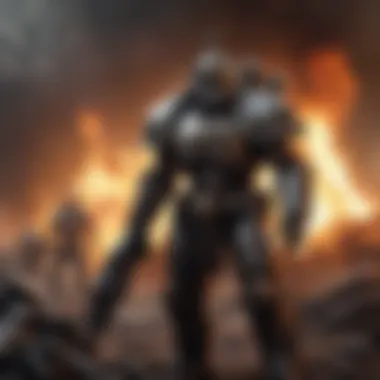
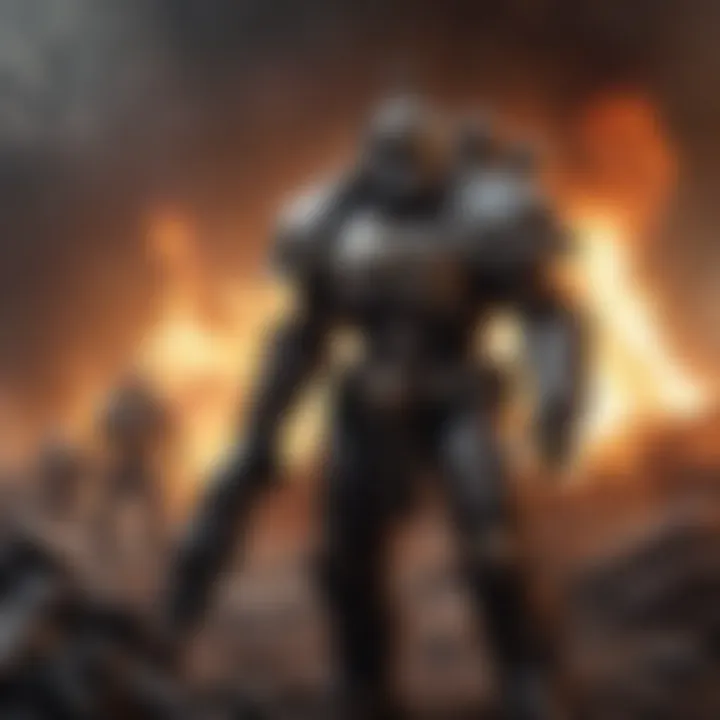
Primarchs and Their Loyalties
A pivotal element in the Horus Heresy saga, Primarchs and Their Loyalties delve into the complex allegiances that shaped the destiny of the Imperium. These demigod-like beings embody distinct virtues and flaws, each influencing the overarching conflict in profound ways. The key characteristic of this aspect lies in the intricate web of loyalties and rivalries that define the Primarchs, adding depth and dynamism to their interactions. The unique feature of Primarchs and Their Loyalties is the juxtaposition of divine heritage with mortal frailty, intertwining themes of honor, betrayal, and redemption into a compelling tapestry of narrative.
The Traitor Legions
In stark contrast, The Traitor Legions epitomize the shattered remnants of brotherhood and unity, consumed by dark ambitions and forbidden pacts. These fallen chapters exemplify the consequences of hubris and treachery, standing as harbingers of despair and ruination within the Imperium. The key characteristic of The Traitor Legions is their descent into madness and malevolence, each Legion forging its path of damnation and depravity. The unique feature lies in their portrayal as tragic figures ensnared by fate, their once noble ideals twisted into twisted reflections of their former glory.
Impact on the Warhammer , Universe
Long-term Consequences
The Long-term Consequences of the Horus Heresy reverberate throughout the expanse of the Warhammer 40,000 universe, shaping the galactic landscape and ideological currents for millennia. This aspect highlights the enduring scars left by betrayal and civil war, underscoring the fragility of empire and the resilience of humanity against insurmountable odds. The key characteristic lies in the perpetual conflict and mistrust engendered by the Horus Heresy, fueling narratives of heroism and tragedy amidst the grim darkness of the distant future. The unique feature of Long-term Consequences is its role as a foundational pillar for the rich tapestry of Warhammer 40,000 lore, seeding themes of sacrifice, defiance, and redemption within its narrative fabric.
Influence on Faction Dynamics
Lastly, the Influence on Faction Dynamics delves into how the fallout of the Heresy reshaped alliances, enmities, and power dynamics across the myriad factions of Warhammer 40,000. This aspect explores the intricate interplay of politics, ideology, and warfare that define the post-Heresy era, offering insights into the ever-evolving landscape of the galaxy. The key characteristic lies in how the grievances and ambitions of the past continue to echo through the present, driving conflicts and alliances in unforeseen directions. The unique feature of Influence on Faction Dynamics is its role in depicting the fluidity of power and allegiance within a universe teetering on the brink of annihilation, where the line between friend and foe blurs in the endless expanse of the 41st Millennium.
Detailed Analysis of Select Legions
In this article, the section on Detailed Analysis of Select Legions plays a crucial role in providing a comprehensive overview of some of the most prominent factions within the Horus Heresy narrative. Delving into the intricate details of specific legions allows readers to grasp the diverse ideologies, unique traits, and pivotal roles these legions played in the Warhammer 40,000 universe. By exploring the characteristics and significance of each legion, this section offers a deeper understanding of the complex dynamics of the Horus Heresy, shedding light on the various tactics, strategies, and themes that defined this critical period.
The Ultramarines
Roboute Guilliman's Legacy
Roboute Guilliman's Legacy stands as a testament to the strategic brilliance and organizational prowess of the Ultramarines Primarch. His emphasis on discipline, efficiency, and adherence to the Codex Astartes not only shaped the Ultramarines' combat doctrine but also influenced the broader Imperium's military structure. This legacy of adherence to strict tactics and unwavering loyalty to the Emperor showcases the Ultramarines' stalwart commitment to duty and honor, becoming a cornerstone of their identity within the Warhammer 40,000 lore. However, this stringent adherence to doctrine may also lead to inflexibility in certain situations, potentially hindering adaptation to unforeseen circumstances.
Primarch's Tactics and Strategies
The Primarch's Tactics and Strategies employed by Roboute Guilliman reflect a calculated and methodical approach to warfare. Known for their structured battle formations, reliance on armored support, and logistical precision, Guilliman's tactics emphasize control of the battlefield and exploitation of enemy weaknesses. This methodical approach not only ensures strategic success but also showcases the Ultramarines' disciplined nature and commitment to efficient warfare. However, this adherence to strategic rigidity may at times limit the Legion's ability to improvise in chaotic or unpredictable combat scenarios, potentially making them vulnerable to unconventional tactics.
The Word Bearers
Lorgar's Fall
The portrayal of Lorgar's Fall delves into the tragic descent of the Word Bearers Primarch from a devoted seeker of truth to a corrupt harbinger of Chaos. Lorgar's journey from a staunch believer in the Emperor's divinity to a fervent worshipper of Chaos unveils the insidious nature of corruption and the manipulative influence of darker powers. This aspect not only adds depth to the Heresy narrative but also underscores the theme of spiritual corruption and the dangers of fanatical zealots within the Warhammer 40,000 universe.
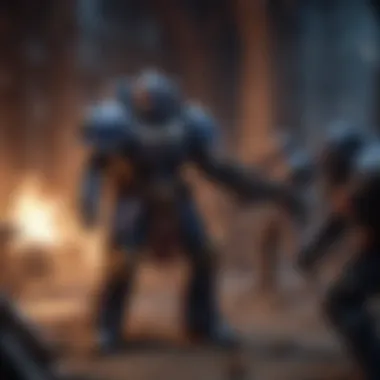
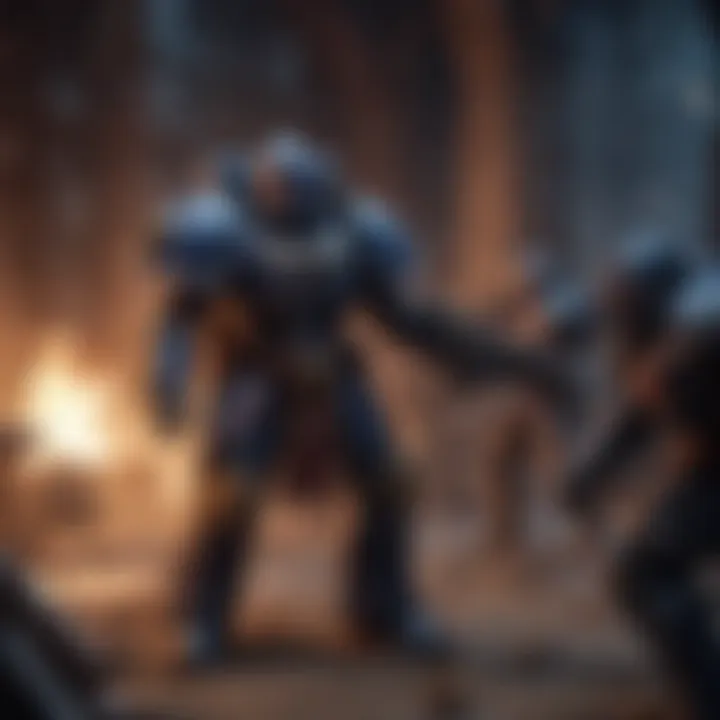
Theological Warfare
Theological Warfare embodies the Word Bearers' insidious use of faith as a weapon, manipulating beliefs to sow dissent and chaos among their enemies. By exploiting spiritual vulnerabilities and inciting religious conflicts, the Word Bearers showcase the power of ideological warfare in shaping battles beyond the physical realm. This aspect highlights the psychological dimensions of conflict and the Word Bearers' adeptness at turning faith into a potent tool of destruction. However, this reliance on subversive ideological tactics may alienate potential allies and isolate the Legion due to their extremist methods.
The Alpha Legion
Masterful Deception
Masterful Deception characterizes the enigmatic strategies employed by the Alpha Legion, known for their intricate webs of misdirection and subterfuge. By weaving complex narratives of betrayal and misinformation, the Alpha Legion excels in instigating confusion within enemy ranks and exploiting vulnerabilities brought about by doubt and suspicion. This talent for deception not only confounds adversaries but also showcases the Legion's mastery of psychological warfare. However, the perpetual shroud of secrecy surrounding their motives may lead to distrust even within their own ranks, creating a landscape fraught with uncertainty and paranoia.
Subversive Tactics
Subversive Tactics highlight the Alpha Legion's penchant for undermining enemy operations from within, infiltrating organizations and sowing discord to weaken them from the core. By infiltrating enemy ranks, spreading misinformation, and inciting internal strife, the Alpha Legion demonstrates their expertise in unconventional warfare and destabilizing established power structures. This focus on subversion and stealth enables the Legion to strike where least expected, maintaining a constant state of unpredictability. However, this reliance on covert operations and manipulation may result in a lack of direct confrontational prowess, potentially impacting their ability to engage in traditional head-to-head engagements.
The Death Guard
Nurgle's Blessings
Nurgle's Blessings epitomize the transformation of the Death Guard Legion under the influence of the Chaos God of Decay. Embracing decay, resilience, and the cycle of life and death, the Death Guard embody a relentless endurance and tenacity that transcends conventional mortal limitations. The foul blessings of Nurgle not only grant the Legion enhanced endurance and virulence in combat but also mark them with the distinctive signs of the Plague God's favor. This fusion of physical corruption and metaphysical resilience makes the Death Guard a formidable force on the battlefield. However, this acceptance of decay and stagnation may lead the Legion to stagnate in their pursuit of progress, potentially trapping them in a never-ending cycle of decay and rebirth restricted by Nurgle's whims.
The Plague Marines
The Plague Marines represent the elite warriors of the Death Guard, transformed by virulent plagues into nigh-indestructible champions of Nurgle. Clad in rotting power armor and armed with filth-encrusted weaponry, the Plague Marines strike fear into the hearts of their enemies with their relentless advance and infectious attacks. Their resilience, empowered by the blessings of Nurgle, allows them to withstand grievous wounds and continue fighting with implacable determination. This combination of physical resilience and infectious contagions makes the Plague Marines a relentless force of plague and despair on the battlefield. However, this reliance on decay and stagnation may alienate potential allies and isolates the Death Guard due to their grotesque appearance and noxious presence.
The Thousand Sons
Magnus the Red's Tragedy
Magnus the Red's Tragedy delves into the catastrophic fall of the Thousand Sons Primarch from grace and his subsequent pact with Tzeentch, the Chaos God of Change. Magnus' hubris and pursuit of forbidden knowledge ultimately lead to the tragic fate of his Legion, culminating in their transformation into beings of pure energy bound within suits of arcane armor. This tragic tale not only underscores the dangers of unchecked ambition and the price of seeking forbidden truths but also highlights the intricate web of manipulation woven by the Ruinous Powers.
Pursuit of Knowledge
The Pursuit of Knowledge embodies the Thousand Sons' relentless quest for enlightenment and wisdom, guided by psychic insight and arcane lore. Enamored with sorcery and psyker abilities, the Thousand Sons delve into esoteric secrets and metaphysical realms in pursuit of understanding the universe's mysteries. This insatiable thirst for knowledge not only sets them apart as scholars and seers but also exposes them to the dangers of forbidden lore and the lure of Chaotic corruption. This juxtaposition of enlightenment and damnation creates a tragic narrative of intellectual brilliance overshadowed by moral decay and metaphysical enslavement.
Evolving Narratives and Storytelling in the Lore
The chapter on Evolving Narratives and Storytelling in the Lore delves deep into the essential aspect of narrative progression within the context of the Horus Heresy Legions. This segment accentuates the dynamic nature of storytelling and lore evolution in the Warhammer 40,000 universe, shaping the foundation of diverse factions and characters. By emphasizing the shifts and developments in narratives, readers gain a profound insight into how storytelling intricacies enrich the overall lore. The analysis provided highlights the significance of progressive storytelling in maintaining relevance and interest among enthusiasts, transcending conventional storytelling norms to offer a more immersive and compelling experience.
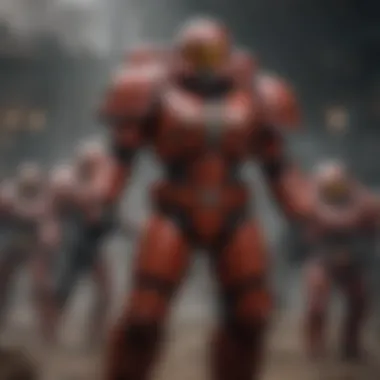
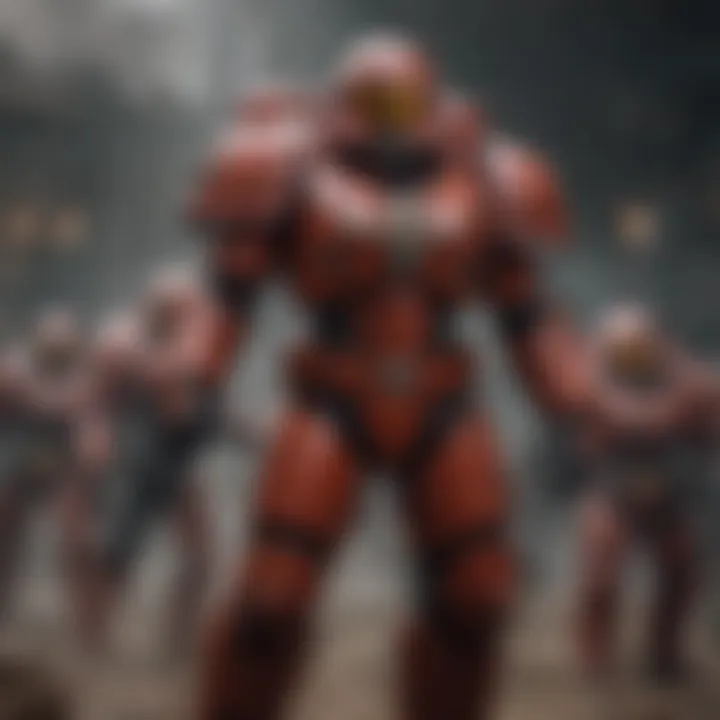
Retcons and Revisions
Impact of New Lore
Delving into the Impact of New Lore unfolds a critical examination of the repercussions of introducing fresh narrative elements to the existing lore. This section provides an in-depth analysis of how the incorporation of new lore influences the overarching storyline, characters, and factions within the Horus Heresy Legions domain. By shedding light on the key characteristics of new lore, readers comprehend its pivotal role in injecting innovation and dynamism into the established narrative framework. Furthermore, the discourse outlines the advantages and potential pitfalls of integrating new lore, offering a balanced perspective on its implications for enriching the overall fabric of the narrative.
Reinterpretation of Events
The exploration of Reinterpretation of Events accentuates the nuanced art of reevaluating established narratives within the Horus Heresy Legions lore. This section focuses on revisiting past events from alternative perspectives, infusing layers of complexity and intrigue into the existing storyline. By elucidating the key characteristic of reinterpretation, the discourse illuminates how fresh viewpoints can rejuvenate storytelling, offering novel insights and expanding the depth of the lore. Moreover, the unique feature of reinterpretation is examined in terms of its efficacy in challenging preconceived notions and fostering a more profound understanding of the events that transpired, enhancing the narrative cohesion and driving engagement among readers.
Fan Contributions and Expanded Universe
Horizon of Possibilities
The segment on Horizon of Possibilities elucidates the boundless creative avenues that fan contributions bring to the expansive lore of the Horus Heresy Legions. By deciphering the key characteristics of fan contributions, readers gain an appreciation for the diverse perspectives and inventive interpretations that fans inject into the narrative landscape. This analysis underscores the intrinsic value of fan input in broadening the horizons of storytelling, fostering a collaborative and inclusive environment within the Warhammer 40,000 universe. Additionally, the discussion outlines the advantages and potential challenges of integrating fan contributions, delineating how these contributions enrich the lore while maintaining the integrity of the established storyline.
Canon vs. Fanon
The exploration of Canon vs. Fanon delves into the intricate interplay between established canon lore and fan-generated content within the Horus Heresy Legions mythology. By contrasting the key characteristics of canon and fanon narratives, readers ascertain the distinct yet complementary roles that each category plays in shaping the overarching lore. This section highlights the significance of maintaining a balance between canon and fanon content, ensuring continuity and coherence while embracing the creativity and enthusiasm of fan contributions. Furthermore, the discourse dissects the advantages and disadvantages of navigating the delicate relationship between canon and fanon, offering a comprehensive perspective on how this dynamic enriches the expansive universe of the Horus Heresy Legions.
Reflection on Themes and Morality
The section on Reflection on Themes and Morality plays a vital role in dissecting the ethical complexities within the Horus Heresy Legions. By scrutinizing the ethical dilemmas faced by the characters in Warhammer 40,000, this segment explores the intricate web of moral quandaries that shape the decisions and actions of these factions. Delving deep into the shades of grey that define faction loyalties, this exploration sheds light on the blurred lines between right and wrong, loyalty and betrayal, in a universe engulfed in perpetual warfare. Furthermore, the section provides a thought-provoking analysis of how these themes intertwine with the broader narrative, contributing to the depth and realism of the Warhammer 40,000 universe.
Ethical Dilemmas
The Ends Justify the Means?
The concept of 'The Ends Justify the Means?' poses a profound ethical conundrum in the context of the Horus Heresy Legions. This philosophical underpinning questions the morality of actions taken in pursuit of a greater goal or outcome. Within the narrative of Warhammer 40,000, this notion is exemplified by characters willing to sacrifice moral principles for the sake of victory, power, or survival. This exploration delves into the controversial nature of such decision-making, shedding light on the repercussions of justifying immoral acts based on perceived noble intentions. By dissecting this aspect, readers gain deeper insights into the complex moral landscape of the Warhammer 40,000 universe.
Betrayal and Allegiance
'Betrayal and Allegiance' stand as a cornerstone of the thematic elements explored within the Horus Heresy Legions. This dichotomy underscores the fragile nature of loyalties in a universe rife with treachery and deception. The intricate webs of allegiances woven by the Primarchs and their legions illuminate the catalytic role betrayal plays in shaping the course of galactic conflict. By delving into the nuances of loyalty and betrayal, this section provides a nuanced understanding of the moral complexities faced by characters as they navigate the tumultuous terrain of the Horus Heresy.
Shades of Grey in Faction Loyalties
Moral Ambiguity
'Moral Ambiguity' serves as a pivotal thematic thread in unraveling the intricate narratives within the Horus Heresy Legions. This concept challenges traditional notions of right and wrong, blurring the lines between heroism and villainy. By exploring the moral gray areas inhabited by the legions, readers are confronted with the unsettling realization that ethical absolutes often give way to pragmatic choices dictated by survival and ambition. The multifaceted portrayals of characters wrestling with moral dilemmas add layers of depth and realism to the overarching narrative of the Warhammer 40,000 universe.
Questioning Allegiances
'Questioning Allegiances' introduces a compelling dimension to the faction dynamics in the Horus Heresy Legions. This exploration delves into the fundamental loyalty shifts, conflicting allegiances, and moral dilemmas faced by characters embroiled in the cosmic conflict. By scrutinizing the motivations behind allegiance shifts and the ramifications of questioning established loyalties, readers are prompted to assess the fluid nature of loyalty and the moral dilemmas inherent in choosing sides in a war where the boundaries between right and wrong often blur.



